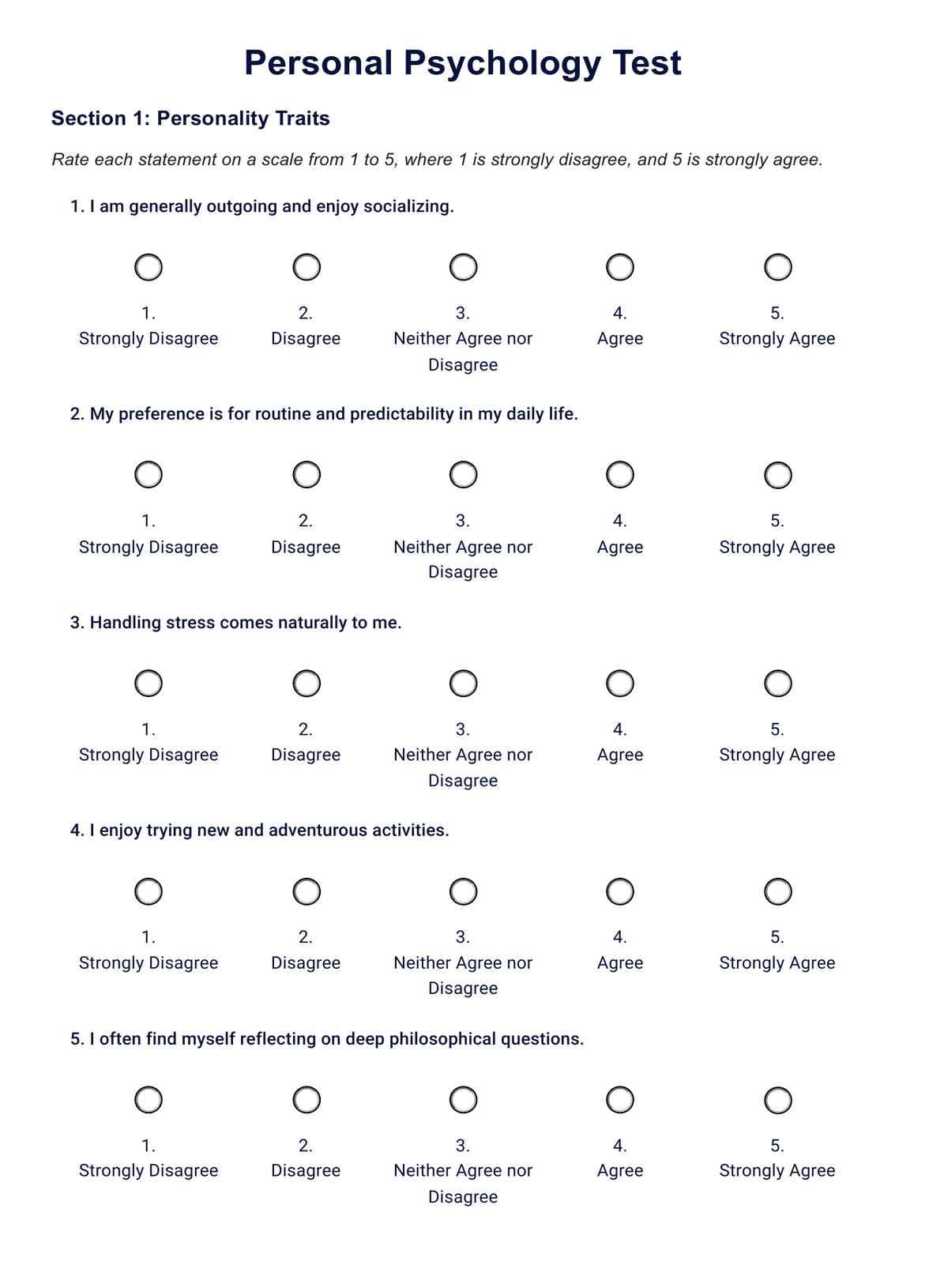A personal psychology test is an assessment tool designed to measure various aspects of an individual's personality, behaviors, and emotional responses.

Personal Psychology Test
Explore your psyche with personal psychology tests, revealing key insights into your personality, emotions, and behaviors.
Use Template
Personal Psychology Test Template
Commonly asked questions
Personal psychology tests typically use standardized questions or scenarios to evaluate specific traits, behaviors, or emotional patterns, providing insights into an individual's psychological makeup.
Knowing your personality type can enhance self-awareness, improve interpersonal relationships, guide career choices, and offer valuable insights into personal strengths and areas for growth.
EHR and practice management software
Get started for free
*No credit card required
Free
$0/usd
Unlimited clients
Telehealth
1GB of storage
Client portal text
Automated billing and online payments











